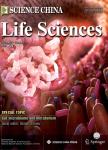Early urinary candidate biomarker discovery in a rat thioacetamide-induced liver fibrosis model
Early urinary candidate biomarker discovery in a rat thioacetamide-induced liver fibrosis model作者机构:Department of PathologyNational Cancer Center/Cancer HospitalChinese Academy of Medical Science and Peking Union Medical CollegeBeijing 100021China Department of PathophysiologyInstitute of Basic Medical Sciences Chinese Academy of Medical SciencesSchool of Basic Medicine Peking Union Medical CollegeBeijing 100005China Department of PathologyBeijing Tiantan HospitalCapital Medical University Beijing 100050China Department of Biochemistry and Molecular BiologyBeijing Normal UniversityGene Engineering Drug and Biotechnology Beijing Key LaboratoryBeijing 100875China
出 版 物:《Science China(Life Sciences)》 (中国科学(生命科学英文版))
年 卷 期:2018年第61卷第11期
页 面:1369-1381页
核心收录:
学科分类:0710[理学-生物学] 07[理学] 09[农学]
基 金:supported by the National Key Research and Development Program of China (2016YFC1306300) the National Basic Research Program of China (2013CB530850), Beijing Natural Science Foundation (7173264, 7172076) Funds from Beijing Normal University (11100704, 10300-310421102)
主 题:urine proteomics biomarker animal model liver fibrosis
摘 要:Biomarker is the change associated with the disease. Blood is relatively stable because of the homeostatic mechanisms of the body. However, urine accumulates changes of the body, which makes it a better early biomarker source. Liver fibrosis is a reversible pathological condition, whereas cirrhosis, the end-stage of liver fibrosis, is irreversible. Consequently, noninvasive early biomarkers for fibrosis are desperately needed. In this study, differential urinary proteins were identified in the thioacetamide liver fibrosis rat model using tandem mass tagging and two-dimensional liquid chromatography tandem mass spectrometry. A total of 766 urinary proteins were identified, 143 and 118 of which were significantly changed in the TAA 1-week and3-week groups, respectively. Multiple reaction monitoring(MRM)-targeted proteomics was used to further validate the abundant differentially expressed proteins. A total of 40 urinary proteins were statistically significant, 15 of which had been previously reported as biomarkers of liver fibrosis, cirrhosis or other related diseases and 10 of which had been reported to be associated with the pathology and mechanism of liver fibrosis. These differential proteins were detected in urine before the alanine aminotransferase and aspartate transaminase changes in the serum and before fibrosis was observed upon hematoxylin and eosin(HE) and Masson s staining.



